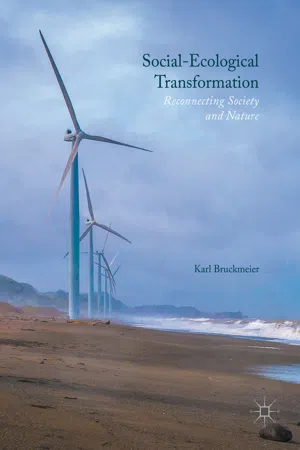Geography
Coastal Flooding
Coastal flooding refers to the inundation of land along the coast due to the overflow of seawater. It is often caused by storm surges, high tides, or tsunamis, and can lead to erosion, property damage, and displacement of communities. Climate change and sea level rise are exacerbating the frequency and severity of coastal flooding events.
Written by Perlego with AI-assistance
6 Key excerpts on "Coastal Flooding"
Learn about this page
Index pages curate the most relevant extracts from our library of academic textbooks. They’ve been created using an in-house natural language model (NLM), each adding context and meaning to key research topics.
- eBook - ePub
- Shimon C. Anisfeld(Author)
- 2011(Publication Date)
- Island Press(Publisher)
4
Water, Water, Everywhere: Dealing with Floods
Although water scarcity problems tend to dominate water management (and this book), too much water can also be a problem. In this short chapter, we discuss various aspects of the flooding problem. We begin with definitional issues, then look at trends in flooding impacts, and finally discuss flood management and ways to reduce our vulnerability to floods. The discussion of floods will continue in Chapter 6 in the context of land use and climate change, and in Chapter 8 in the context of the “urban stream syndrome.”4.1. Defining Floods Floods are unusually high water levels that cause the inundation of what we normally think of as dry land. Floods can be classified into three types: • River floods: When the flow of water in a river is larger than the capacity of the channel to convey it, the river will overflow its banks and inundate its floodplain.• Urban floods: Stormwater flow in urban areas is often highly modified by land use and by a network of storm sewers meant to convey rainwater to streams. During rainfall events, flooding can occur along urban streams or streets or in people's basements. Backups of storm or sanitary sewer lines are also common.• Coastal floods: Coastal storm surges can lead to flooding with sea-water, driven primarily by high winds in a landward direction, often combined with high tides. This was the case, for example, with the flooding of New Orleans by Hurricane Katrina in 2005.Precipitation is obviously a key factor in noncoastal flood events. High-intensity short-duration events extending over small areas (thunderstorms) can result in rapid stormflow and can cause short-term flooding in small streams, especially in urban areas. In contrast, flooding in large rivers typically lasts longer and is caused by rainfall of longer duration and greater spatial extent. In addition, rain-on-snow events can increase the amount of water flowing to streams by adding large volumes of melted snow. - eBook - ePub
A New Coast
Strategies for Responding to Devastating Storms and Rising Seas
- Jeffrey Peterson(Author)
- 2019(Publication Date)
- Island Press(Publisher)
ART IIStorms and Rising Seas Disrupt the American Coast
I have seen the hungry ocean gain Advantage on the kingdom of the shore. William Shakespeare, Sonnet 64Passage contains an image
4
Scale and Cost of the Coming Coastal Inundation
There is great diversity of geography along the Atlantic, Gulf of Mexico, and Pacific coasts of the United States. The beaches of Cape Cod, the wetlands of Louisiana, and the hills of California’s Big Sur are iconic coastal images for most Americans. More severe storms and rising seas will be kind to coastal places fortunate to have notable elevation above sea level and will inundate those places with little elevation. Some of these places at risk of inundation are settled communities, both large and small, and others are natural areas, such as marshes and beaches, providing a range of environmental, economic, and other benefits.New mapping tools, widely available online, provide the means to visualize a given amount of sea level rise or storm surge on a specific coastal area, and these tools have been used to assess the geographic extent of inundation and identify the communities, infrastructure, and ecosystems at risk. From these assessments, researchers have developed several estimates of the economic value of property expected to be inundated, suggesting that property valued at several trillion dollars is at risk. These studies, however, are based on the value of coastal property as it stands today. Over the coming decades, the population of coastal areas is expected to grow steadily, and the new homes and businesses needed by this expanded population will add to the property already at risk of inundation.Getting a feel for the scale and cost of inundation is important for thinking about how the country should respond to these risks. Is a new national program to prepare for these impacts really needed? What are the differences in impacts from state to state? How do costs of coastal storms compare to those of rising seas? How might coastal population growth change estimates of impacts? Each of these questions is addressed below. - eBook - ePub
- Brian Dawson, Matt Spannagle(Authors)
- 2008(Publication Date)
- Routledge(Publisher)
COASTAL ZONE IMPACTSCoastal zones are particularly susceptible to climate change as they are subject to several different, and often reinforcing, physical and biological climate-related impacts. These include sea level rise, higher risks of exposure to extreme events (such as intense storms, storm surges, and flooding), salt contamination of freshwater resources, and climate-related changes to marine and terrestrial ecosystems. Humans are also vulnerable to coastal zone changes as one-quarter of the world’s population resides within 100 km distance and 100 m elevation of the coastline, with significant increases in the number of people living in coastal regions expected over the next half century.1 Many of the world’s major cities and industrial facilities are located on the coast.Human activities have already had a significant impact on coastal zones, and will continue to do so with or without climate change. Urbanization, pollution, changes to nutrient loads, conversion of marshlands and mangroves to other uses, overfishing, coral reef degradation, changes in natural sediment loads and erosion patterns, and alterations to hydrology and drainage patterns are just some of the impacts humans have had on coastal zones. Global warming will, however, introduce an additional set of physical and ecosystem impacts that are likely to affect the livelihoods of millions of people.The three principal areas of climate change concern aresea level rise, marine and terrestrial ecosystem andbiodiversity impacts, and increased exposure toextreme weather events.Sea level rise
Estimates of how much sea levels will rise over this century vary considerably—they range from 0.5 to 1.5 m (seesea level rise - eBook - ePub
Landscape Architecture for Sea Level Rise
Innovative Global Solutions
- Galen D. Newman, Zixu Qiao, Galen D. Newman, Zixu Qiao(Authors)
- 2022(Publication Date)
- Routledge(Publisher)
urban periculum - a collection of areas that are at risk of flood hazards and sea level rise which constitute a landscape at risk in which the mechanisms showcased in this book should be integrated, mixed, and applied.Flooding and Sea Level Rise
In the past 21 years, 2.3 billion people were affected by floods and 242,000 deaths were a result of flooding (see Figure 0.2 ); floods accounted for 40% of the global total for all weather-related disasters during this time period (COOPS, 2016) (see Figure 0.3 ). In 2017, floods caused approximately $60.7 billion worth of property and crop damage and 116 fatalities across the United States (DESAPD, 2018) (see Figure 0.4 ).Data source: United Nations, 2015.Figure 0.2Number of weather-related disasters reported per country (1995-2015).Data sources: US DOC, 2014; NASA, 2017; Statista, 2021.Figure 0.3Global annual reported number of floods.Data sources: US DOC, 2014; NASA, 2017.Figure 0.4Economic damage and fatality rates caused by floods and flash floods in the US.Data source: NASA, 2021.Figure 0.5Global mean sea level since 1993 as observed by satellites.Data source: NOAA, 2017a.Figure 0.6Global mean sea level rise projection by NOAA.With 4-8 inches of sea level rise expected by 2050, Coastal Flooding will more than double. Global mean sea level could rise up to 6.6 feet by 2100 (Parris et al., 2012) (see Figures 0.5 and 0.6 ).Nuisance flooding is estimated to increase up to 900 percent more frequently within U.S. coastal communities than in the previous 50 years (NOAA, 2017b) (see Figure 0.7 ).Data source: NOAA, 2020.Figure 0.7Sea level rise scenarios of o to 6 feet along the US Coast.Today, 55% of the world's population lives in urban areas; this is expected to increase to 68% by 2050 (United Nations, 2015). In the US, in 1910, 46% of the population lived in urban areas and by 2010 this number increased to 81% {U.S. Census Bureau, 2015). Coastal areas have the highest population density in the US, with 14 of the nation's 20 largest cities and 19 of the 20 most densely populated counties along the coast (U.S. Census Bureau, 2015) (see Figure 0.8 - eBook - ePub
Social-Ecological Transformation
Reconnecting Society and Nature
- Karl Bruckmeier(Author)
- 2016(Publication Date)
- Palgrave Macmillan(Publisher)
2007 : 43) describe the challenges of sustainable coastal management in the twenty-first century as sharing of space and resources between humans and other species, as conflict mitigation, consensus building, sacrifice, and compromise.In some regards, the situation in coastal areas is similar in all countries. Coastal landscapes are the preferred human habitats; two-thirds of all megacities are located at the coast. The global economy, global transport, and communication are strongly dependent on coastal cities and ports. In all continents, the population in coastal areas increases. Duxbury and Dickinson (2007 : 319) describe the situation demographically: approximately 41 % of the world’s population is living not more than 100 kilometres away from the coast: in 1990, 2 billion people and in 2000, 2.3 billion people. In 2025, the number is expected to be 3.1 billion people (Duxbury and Dickinson 2007 : 319). Because of the concentration of natural resources in coastal waters, the coastal ecosystems are important as life-supporting systems. Ecologically seen, coastal areas are vulnerable to climate change and sea level rise, storms, floods, earthquakes, and tsunamis.People continue to move to the coasts, although disasters increase and the impacts of climate change and sea level rise can already be experienced. After the devastation of New Orleans through Hurricane Katrina in August 2005, people moved back in the city and continued to live as usual. Inhabitants of coastal areas have always lived with floods and storms, but the problems are increasing with global climate change, especially in cities at the coast. The flood protection technologies of dams and dykes situations are necessary more than ever, but they become less effective with continuing sea level rise and more extreme weather situations. Technically and economically, it is not possible to build always more, stronger, and higher dams. Flood protection walls as the Thames Gateway in London and the storm gates in Rotterdam show more the limits of protection through physical engineering than the successful adaptation to climate change. In future, coastal areas may be confronted with necessities of resettlement and with conflicts because of that. - Gerd Masselink, Michael Hughes, Jasper Knight(Authors)
- 2014(Publication Date)
- Routledge(Publisher)
Geology describes the initial state and properties of the solid boundaries, including the surrounding geology and pre-existing morphologic state (shelf and shoreline configuration, lithology). Globally, tectonics controls the width and slope of the continental shelf. Wide and flat continental shelves (e.g. east coast of the USA) permit more rapid coastal progradation for a given rate of sediment supply than steep and narrow shelves (e.g. southeast coast of Australia). In addition, wide shelves lead to greater reduction in wave height by frictional dissipation and are also responsible for amplification of tides. Regionally, coastline configuration can be important by controlling wave processes such as reduced wave energy levels in the lee of offshore islands and within coastal embayments. Lithology is a significant factor on the recession rate and cliff profile development along eroding rocky coasts.Unconsolidated sediments are essential for coastal evolution because they build into landforms such as beaches. The nature and abundance of the sediment is examined in Chapter 5 . Sediment availability depends on the location and volume of sediment sources, and transport processes between the sources and the location where sediments are deposited. Sediments may have a marine, fluvial/deltaic, terrestrial or biological origin, and so they may vary in their physical, chemical and particle size properties from place to place. Muddy sediments are most common in humid temperate or tropical climates, where they result in deltas and infilling of estuaries. Sandy sediments are characteristic of the coast and inner continental shelves in the lower midlatitudes. Gravel deposits are more common in paraglacial areas where the coastal hinterland has been glaciated (see Chapter 11 ).External forcing refers to the external processes that provide the energy to drive coastal evolution. Important aspects are the frequency, magnitude and character of the energy sources, which are atmospheric (coastal winds and climate), terrestrial (river outflow) and marine (waves, tides and currents). Of these, marine sources are most important (discussed in Chapters 3 and 4 ), but the marine energy regime is closely dependent on atmospheric circulation and therefore long-term changes in global climate regime.Changes in environmental conditions drive coastal evolution over a range of time scales (Figure 1.3





